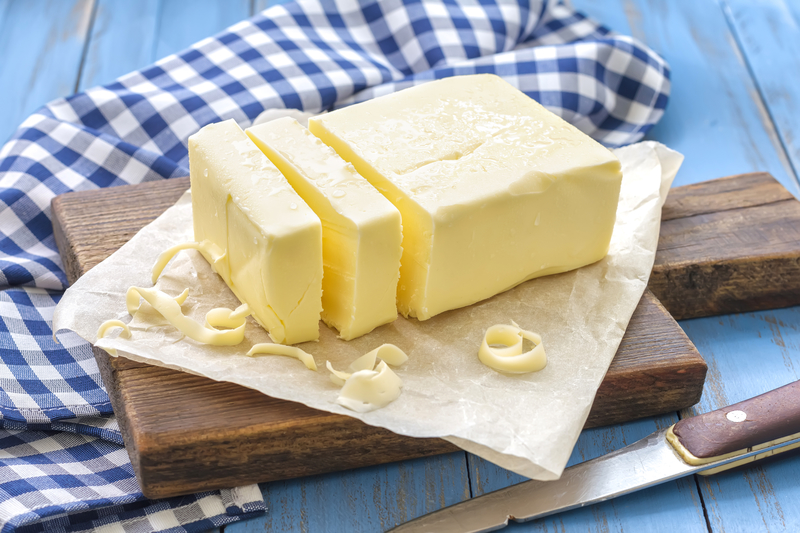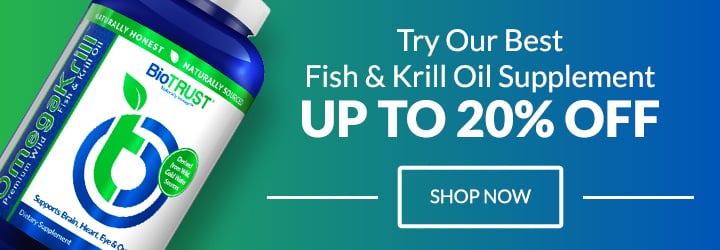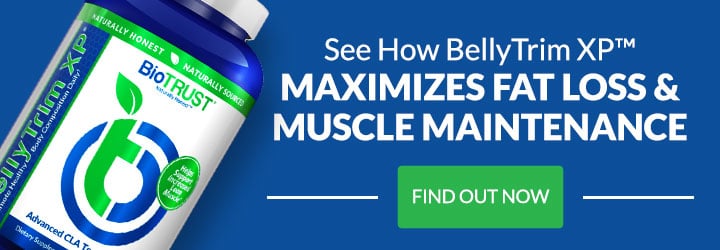Is Butter Bad For You? Here’s What Science Says…

Do you remember the advertisements: “Give’ em all a little pat of butter?” With a catchy jingle that could only come from the ‘80s, we were reminded that “pure, fresh, natural dairy butter has only 36 calories per pat.” While the low-fat proponents were warning us against all of the dangers of fat (especially saturated animal fats) and advising us to replace butter with margarine, the dairy industry was trying to fight back by telling us we could enjoy butter and a healthy lifestyle. Who would have thought? In the last decade, we’ve really come a long way from the myths and misunderstandings that cast an ominous (if not undeserved) shadow over dietary fat, but does that mean butter might be beneficial? Or, is butter bad for you?
There’s one thing most folks agree on—butter is delicious. Butter can turn a bland food into something worth celebrating. If you haven’t had butter in a while, give your next batch of steamed broccoli a little pat to see if you don’t find yourself a little more enthusiastic about devouring that dish.
Yet butter is high in saturated fat, which is responsible for clogged arteries, high cholesterol, heart disease, cancer, weight gain, and more, right? So, no matter how tasty it is, it should be avoided at all costs, right?
Not so fast!
Believe it or not, recent research has cast serious (if not conclusive) doubts on what we’ve been force-fed to believe over the years: Butter isn’t all that bad. In fact, there may even be some health benefits that can be derived from butter. Let’s take a deeper dive into the “is butter bad for you” question by looking at some of the research.
The Butter and Cholesterol Connection
A cornerstone of conventional nutrition “wisdom” has been the recommendation to replace saturated fats with oils rich in omega-6 (linoleic acid) polyunsaturated fats (e.g., industrial processed vegetable oils including canola, corn, cottonseed, safflower, soybean, and sunflower). A prime example is the long-standing advice to swap butter for margarine. As reported in the British Medical Journal, evidence from a 50-year-old trial from Minnesota indicates that that advice may be flat-out wrong; in fact, the study found that substituting linoleic acid for saturated fats increased the rates of death from all causes, coronary heart disease, and cardiovascular — lower cholesterol levels notwithstanding.1 In fact, another surprise was that decreased serum cholesterol levels led to higher risks of death, rather than lower.
Another study, published in the Lancet, looked at changes in cholesterol levels over 20 years and all-cause mortality among a group of 3,572 men aged 71 – 93. Contrary to what we’ve been led to believe, lower cholesterol levels were again found to actually increase the risk of death.2 And a growing number of studies are finding similar results; namely, lowering our saturated fat consumption and cholesterol doesn’t decrease deaths or heart attacks. For example, a meta-analysis found no significant evidence that saturated fats from our diets increase the risk of cardiovascular disease.9
Before you go patting butter on everything, it’s worth pointing out that butter increases non-HDL cholesterol as well as apolipoprotein B (apoB), which are both associated with increased risk of heart disease. The point here is that the traditional view of cholesterol is flawed, and an overemphasis on LDL and total cholesterol is misguided (at best).
Now that the big, bad cholesterol skeleton is out of the closet, does butter have any benefits? Or, is butter bad for you? I’m glad you asked.
The Health Benefits of Butter
While a little pat — which is only a teaspoon — may contain “just” 36 calories, it doesn’t take long for a few pats to add up to a lot of calories, which is one reason butter (and fats in general) have been demonized for making you fat. Yet, studies have found that higher consumption of full-fat dairy (including butter) lowered the risk of obesity (and abdominal obesity) and reduced the risk of metabolic diseases.18
Fortunately, those calories are not just empty. While a tablespoon of butter provides 102 calories, butter also provides essential nutrients, including:
Healthy Fats. Our brains are made up of 60% fat and contain up to 25% of the body’s cholesterol. And they require a ton of energy to function well.5 Recent research has demonstrated that fatty acids are crucial to the brain’s ability to perform, and the only way to get them is by eating… fat. Guess what? Even though saturated fat, which isn’t the demon we’ve been led to believe, makes up the greatest proportion of butter fat, there’s more to butter, including:
- Arachidonic (AA) and Docosahexaenoic Acids (DHA). These are two types of fat found in animal fats including butter, and they have been shown to support healthy brain and heart functioning.3,6 DHA is one of the all-important omega-3 fats, and it’s important to point out that butter from grass-fed cows contains a higher percentage of this nutrition all-star (compared to conventional butter).
- Short- and Medium-Chain Fats. Because they are metabolized differently, these types of fats appear to better improve satiety10 and may even support burning more fat.11
- Butyrate. Perhaps one of the biggest benefits of butter is that it’s one of the few food sources of the short-chain fatty acid butyrate. While gut bacteria can create butyrate (for example, through the fermentation of prebiotic fibers),12 the top dietary source for butyrate is butter, which contains about 3 – 4% butyrate. This little-known fatty acid helps support the immune system13 as well as a healthy response to inflammation.14, 15, 16 Butyrate also helps protect the digestive system, improves mitochondrial function, supports brain health, increases satiety (improves appetite management), and even lowers fasting levels of triglycerides and insulin.
- Conjugated Linoleic Acid (CLA). While many people find CLA in weight-loss supplements, it’s also found in foods, and one great source is grass-fed butter. Studies have found that supplementation with CLA can help improve body composition (e.g., less fat, more muscle).17
- Glycosphingolipids. Another fat found in butter, glycosphingolipids may help support the digestive system.
Essential Minerals. You can also find trace nutrients like chromium, iodine, zinc, and manganese, which are needed for a range of functions and support overall health, in butter.
Fat-Soluble Vitamins. It shouldn’t come as much of a surprise that most people’s diets are severely lacking in any number of nutrients, including the all-important fat-soluble vitamins. Fortunately, butter is one of the best sources of the fat-soluble vitamins A, D, E, and K2, which are packaged nicely with butter fat, making them highly bioavailable. Many people believe they get plenty of vitamin A from the conversion of beta-carotene (as found in carrots for example). Yet it turns out that a mere 3% of beta-carotene is converted to the A we need.4 Vitamin K2 is another vitamin that has key benefits that many folks are unaware of, including supporting cardiovascular7 and bone health.8 Butter is a rich source.
What is the Best Type of Butter?
Not all butter is the same. If you’re buying butter from conventionally-raised cows, you might be better off avoiding it, as most cows found on factory farms are fed an unnatural grain-based diet of corn and soy (those very same seeds used to make unhealthy vegetable oils) rather than the grass they are designed to graze on. This not only negatively affects the life of the poor cow, which may also be injected with synthetic growth hormones and antibiotics, but it also adversely impacts the nutrition found in the milk.
When comparing conventional butter to butter from grass-fed, pasture-raised cows, we find higher levels of omega-6 fats (which promote inflammation when consumed in excess, a huge problem for most people) and lower levels of omega-3 fats and CLA (which we don’t typically get enough of) in the conventional dairy. In addition, organic, grass-fed butter offers several more health benefits, including more vitamins, minerals, and antioxidants (including carotenoids).19
Another great choice is grass-fed ghee. Ghee, what’s that? Also known as clarified butter, ghee has had the casein removed and is preferred for cooking as it has a higher smoking point.
So, Is Butter Bad For You?
So, is butter bad for you? Well, yes…and no.
Butter is back, and for the most part, that’s a good thing. That doesn’t mean it’s time to slather it on everything, however, as it’s not necessarily a perfect food either. It is calorie dense, and too much of a good thing can become, well, bad. And even though experts may have gotten the cholesterol story wrong, there’s evidence that butter could potentially impact other markers of cardiovascular risk. Let’s just say, a little pat of butter goes a long way, but it can, in fact, be part of a healthy diet. (Though, as always, individual differences apply as well.) Diet diversity has many benefits, and that includes adding butter to your rotation of healthy fats like olive oil. Enjoy!







